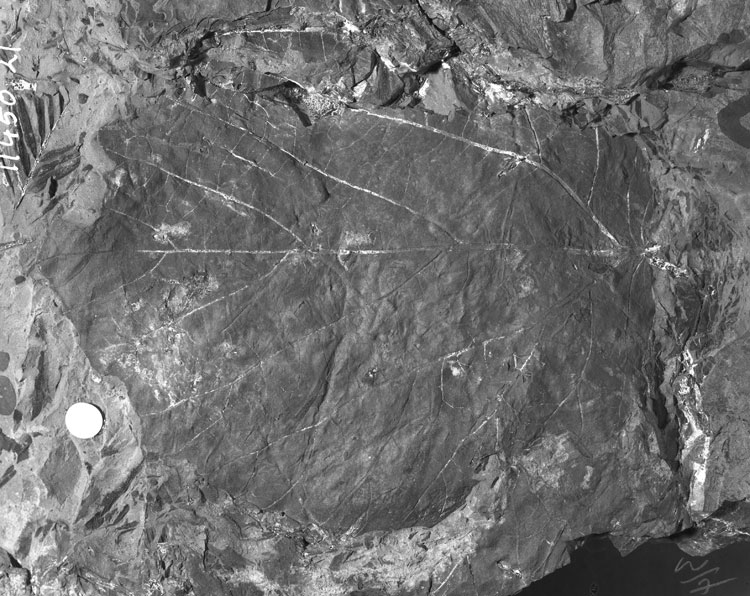Locality
Arctic Slope of Alaska locality USGS 11606, north of Maybe Creek. This locality is a bluff approximately 10 m high on the east side of an unnamed tributary of the Price River. The predominant lithologies are bentonitic clays overlying a silty sandstone capped by coal beds up to 2 m thick, which are in turn overlain by a white-gray medium-grained sandstone. Irregularly dispersed throughout the clay are nodules and sheets of ferruginous limestone (sideritic) which, although light gray when fresh, weather to a rusty brown. With the exception of some poorly preserved plant matter in the upper sandstones, and impressions of platanoid leaves in the power sandtsones, the plant material is confined to these fine-grained iron-rich nodules and is preserved as impressions totally lacking cuticle. There is little evidence of post-mortem decay but many leaves are penetrated by vertical fossil rootlets. Platanoid leaves are most common in siltier/sandier facies. The uppermost coal surface supports several in situ tree bases each of which is approximately 20 cm in diameter.
Latitude: 69.528329 °N
Longitude: -153.887128 °W
Description
Leaf: simple; asymmetrical to symmetrical; shape unknown but probably wide ovate; apex missing; base auriculate; margin serrate, teeth irregular in shape, size and spacing with acute apices with a glandular thickening at the termination of the medial vein and rounded sinuses, third and fourth order vein looping present on basal sides of teeth; venation suprabasal imperfect marginal actinodromous; primary midvein straight, moderate; pectinal veins arising from midvein t wide acute angle angularly curved towards apex and somewhat less strong than the midvein; superior secondary veins of moderate thickness, departing midvein at a wide acute angle and abruptly curving towards the apex, becoming more or less straight and forked one or two times near margin and if projected back to the midvein forming an angle of ±30° with it; inferior secondary veins weak, more or less straight to undulating, craspedodromous, simple, approximately three pairs; tertiary veins percurrent, convex, and often forked, joining both ad- and abmedial sides of the secondaries at 90° or at an acute angle, both alternate and oppositely arranged, fourth order veins, thin, orthogonal, and often percurrent between the tertiaries but often forked or forming polygonal areoles.
Remarks
The teeth of these specimens are apparently of the Platanoid type although the tooth venation appears to be somewhat irregular and the larger teeth show evidence of festooned brochidodromy in the third and fourth order venation. These specimens compare well with Crednaria mixta (Hollick, 1930; Plate 56, Fig. 4; Plate 57, Fig. 1; p. 88).
